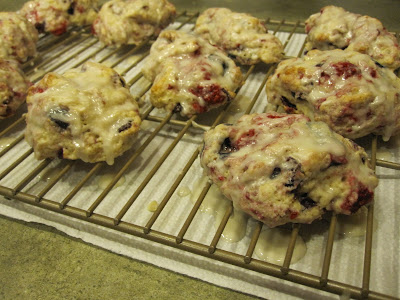"Trouble Shooting"-- Modern Cloth Diapering Series Three
Lisa is back with the third installment on our series about cloth diapering this morning. Make sure and check out Series One about the basics of Cloth Diapering and Series Two about washing cloth diapers if you haven't already!
----------------------------------------------------------------------------------------------------------------------
Stink: I spoke about stink in the previous series. Just remember that stinky diapers are DIRTY diapers! Something in your washing routine needs to be tweaked. Try different detergents, adding extra rinses, washing less or more diapers at a time, and make sure you’re rinsing poop!
All of these perceived issues can be easily avoided. As long as you stick with it, cloth diapering is fun, easy and clean.
----------------------------------------------------------------------------------------------------------------------
Trouble Shooting
For one reason or another, a large portion of parents who
start cloth diapering give up. And they usually give up too soon. Cloth
diapering can be hard at first, but as long as you stick with it and have a good
resource, you can overcome rashes, stink and yeast.
I’ve come across
every one of these issues but through trial and error found ways around them.
Rashes: This is the most frustrating issue with cloth
diapering it seems. Personally, my daughters have had significantly fewer
rashes with cloth diapers. Most of the time, a diaper rash is due to food
sensitivities, stomach viruses, excessive bowel movements or chemical
sensitivities. These are the first steps I would take to alleviate a rash;
·
Most newborn babies tend to have red bottoms
with or without sores. This is because of frequent bowel movements. A barrier
cream should alleviate this issue. My favorite combo is a zinc cream and a
petroleum cream. The zinc will heal the skin while petroleum protects and
seals. Vaseline is NOT cloth diaper
friendly so a liner should be used. My favorite zinc cream that is cloth diaper
friendly is California Baby Calming Diaper Rash Cream. I prefer to use
disposable liners with diaper creams but you can use reusable liners and hand-wash
them separately.
· Wetness sensitivity
happens when using fabrics that aren’t made of a stay dry material such as
prefolds, flats and fitted diapers. The skin gets red and sore due to constant
wetness against the skin. This is alleviated by either switching to a diaper
with stay dry material such as a pocket diaper or using a liner. The cheapest
route is to buy a yard of micro fleece and cut it into rectangles. You can get
about 40 reusable liners out of a $4.00 yard of fleece! I picked green tie dye
last time. And to me, it’s cheap enough to toss when it gets too nasty.
·
Fabric sensitivity can happen with synthetic
fibers. Some examples of synthetic diaper materials are suedecloth, microfiber,
microterry, and polyester fleece. Many pocket diapers, All-in-One diapers, and
even some fitted diapers contain synthetic materials on the inside. It will
cause the skin to be red and inflamed. The only way to fix this is to switch to
natural fibers such as cotton, wool, and hemp. Bamboo is a good option too
although it isn’t considered a 100% natural fiber. This will require more
frequent diaper changes to avoid wetness sensitivity.
Yeast: If your
baby has a rash that isn’t getting better with traditional diaper creams it’s
safe to assume it’s yeast. It will look really red and raised. Yeast can live on cloth diapers so here are
the steps to take with a yeast.
- Buy some disposable diapers, disinfecting bleach, and clotrimazole cream (athlete’s foot cream).
- Apply the cream to the effected area twice a day. You can cover the cream with Vaseline to help protect and soothe
- Follow your normal washing routine but add ½ a cup of bleach to each wash until they have all been cleaned. I recommend using bleach once a month anyway.
- Wash all blankets and crib sheets with ¼ cup of bleach
- Use disposable diapers until the rash has been gone for 2 days.
- Buy some disposable diapers, disinfecting bleach, and clotrimazole cream (athlete’s foot cream).
- Apply the cream to the effected area twice a day. You can cover the cream with Vaseline to help protect and soothe
- Follow your normal washing routine but add ½ a cup of bleach to each wash until they have all been cleaned. I recommend using bleach once a month anyway.
- Wash all blankets and crib sheets with ¼ cup of bleach
- Use disposable diapers until the rash has been gone for 2 days.
Stink: I spoke about stink in the previous series. Just remember that stinky diapers are DIRTY diapers! Something in your washing routine needs to be tweaked. Try different detergents, adding extra rinses, washing less or more diapers at a time, and make sure you’re rinsing poop!
All of these perceived issues can be easily avoided. As long as you stick with it, cloth diapering is fun, easy and clean.
In the next series I will cover cloth diaper safe creams!
------------------------------------------------------------------------------------------------------------------------
Thanks for stopping by today! I'm going to post my DIY super cheap cloth diaper detergent recipe for extremely sensitive baby skin this afternoon, it also works great for regular clothes and is a huge money saver!
------------------------------------------------------------------------------------------------------------------------
Thanks for stopping by today! I'm going to post my DIY super cheap cloth diaper detergent recipe for extremely sensitive baby skin this afternoon, it also works great for regular clothes and is a huge money saver!
.jpeg)







Comments
Post a Comment